News
2024.07.23
Please Support Our Efforts to Meet Our Next Challenge: Becoming a Symbol of the Future
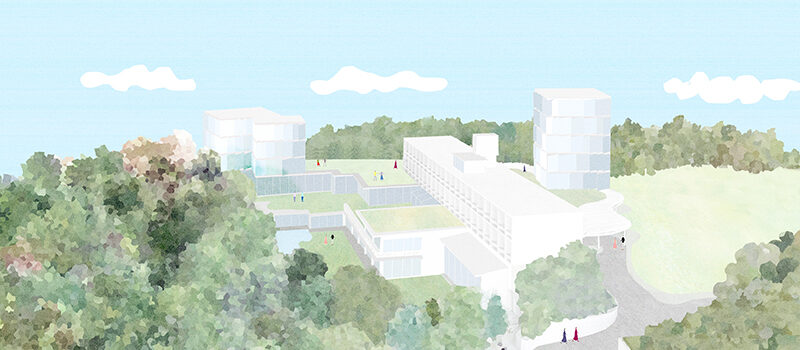
Goal: Raise 5 Billion yen
To commemorate its seventieth anniversary, the International House of Japan (I-House) launched a fundraising campaign in 2022 with the vision of becoming a leading hub for intellectual dialogue in the Asia-Pacific region and exerting a greater global impact.
With a focus on building a foundation for the next 100 years, I-House has established a new fundraising goal of ¥5 billion.

Contributing to building a free, open, and sustainable future through intellectual dialogue, policy research, and cultural exchange with a diverse world
In 1952, soon after the end of World War II, I-House was founded as a private, nonprofit organization to serve as a venue for international exchange in academic research. The need for such an institution was keenly felt by those who believed that Japan and the United States engaged in warfare because of a lack of mutual understanding. The founding of I-House was supported by American philanthropist John D. Rockefeller, 3rd and like-minded individuals. Since then, I-House has served as a hub for exchange among intellectual and other leaders from various fields. In 2022, the seventieth anniversary of its establishment, I-House merged with the Asia Pacific Initiative, an independent, private-sector think tank. As a result, I-House now has the capacity to undertake research programs with significant social impact, in addition to the resources of an internationally minded membership organization and the facilities to accommodate world dignitaries to become a leading hub for intellectual dialogue not only in Japan but in the broader Asia-Pacific region, as well as globally.
Preserving Historical, Cultural Assets
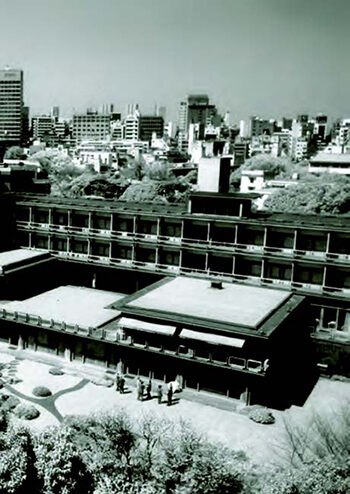
The main building of I-House was jointly designed by Kunio Maekawa, Junzo Sakakura, and Junzo Yoshimura and completed in 1955. It has been renovated twice, including to enhance earthquake resistance in 2005. The building has been highly praised for the harmony it achieves with the Japanese garden, designed by famed Kyoto landscape artist Ogawa Jihei VII for the fourth head of the Mitsubishi conglomerate, Koyata Iwasaki. In 2006, the building was acknowledged as a tangible cultural property by the Agency for Cultural Affairs of Japan, and the garden was designated as a place of scenic beauty by Minato-ku in 2005. To preserve these important historical cultural assets, efforts are being made, as listed below, so they can be passed on to future generations. At the same time, long-term plans for repair, including strategic investment, are being devised and executed.
1) Balancing efforts for the preservation and management of the fundamental structure and design with the ensuring of safety and functionality.
2) Organizing and preserving documents related to the buildings and garden.
3) Conducting appropriate maintenance, preservation, and management that takes the historical context into consideration.
Reorganization Plan
The Roppongi 5-chome West District is slated for large-scale redevelopment, and the neighborhood surrounding I-House is expected to undergo significant change. The area along Toriizaka will be reorganized into a center for research and cultural activities. While the West Wing and Annex are scheduled to be dismantled as part of the redevelopment project, I-House will do all it can to preserve the main building and garden as historical and scenic assets. The West Wing will be rebuilt in line with the redevelopment of the surrounding area.
I-House will be reborn through the construction of a new West Wing and the renovation of the interior of the main building. The harmonious blending of the new and old will result in a space that members and guests from Japan and abroad will cherish, thereby enhancing the value of an I-House membership. We also hope to further expand our program
activities.
Making I-House More Attractive to Members and Providing the Space and Opportunities for Intellectual Dialogue and Community Building for People of All Generations and Areas of Expertise
Following the reorganization, the functions of I-House as a hub for intellectual dialogue and cultural exchange will be greatly enhanced. The library salon and co-working space will be expanded to promote opportunities for exchange between members—both long-timers and those in the younger generation. Dining and bar facilities will also become forums for dialogue and exchange. The community of members will develop into a diverse and inclusive network encompassing the Asia-Pacific region, in line with I-House’s roots and its mission to serve as a venue for intellectual dialogue with people from around the world.
We will also strengthen our strategic partnerships with related organizations in order to provide a richer variety of events and upgraded content, organizing special lectures
by members who are leading figures in various fields and implementing projects in the public interest undertaken by the program department.
Developing Programs in Four Domains to Become a Knowledge Hub for the Asia-Pacific
I-House will develop its programs in four broad areas: 1) international relations, regional studies and geopolitics; 2) social systems, governance and innovation; 3) civilization studies and philosophy; and 4) art and design.
The Institute of Geoeconomics, established in July 2022, has gained prominence for its recognition of the importance of geoeconomics, which integrates strategies for international economics and geopolitics. Initiatives like the Silicon Valley Japan Platform, Policy Entrepreneur’s Platform, and Asia Leaders Fellowship are helping strengthen links between entrepreneurs and the policy community. The Art and Design Program, meanwhile, promotes artistic exchange by inviting internationally renowned artists and architects to Japan. It also aims to generate relational value through art by promoting dialogue between artists and entrepreneurs.
Moving forward, we will further enhance international collaboration and strive to become a hub for knowledge exchange in the Asia-Pacific region.
While carrying on the traditions of the past 70 years, I-House will work with you to embark on a new era with an eye toward the next 100 years.
The fusion of the old and new, as seen in the existing harmony between the main building (architecture) and the garden (nature) and in the addition of the new West Wing, will become the symbol of the new I-House. This endeavor will be advanced in accordance with three concepts.
1. Fusion of Nature and Architecture
We seek the fusion of nature and architecture as a new symbol of I-House, embracing the rich natural landscape and ease of movement of the former Iwasaki residence garden, as well as the main building’s openness and its harmony with the garden.
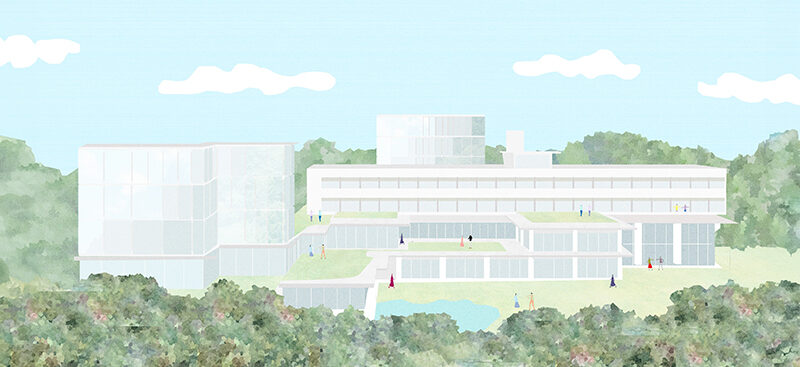
2. Blending of Old and New
We will carefully preserve the main building, a masterpiece of Japanese modernist architecture, and the former Iwasaki residence garden, designated as a place of scenic beauty by Minato-ku, to create a new landscape where these elements are in harmony with the new West Wing.

3. Encouraging Intellectual Dialogue and Cultural Exchange
The fusion of nature and architecture and ease of movement in the garden and interior spaces will result in a knowledge hub that will encourage encounters, dialogue, and exchange between people.
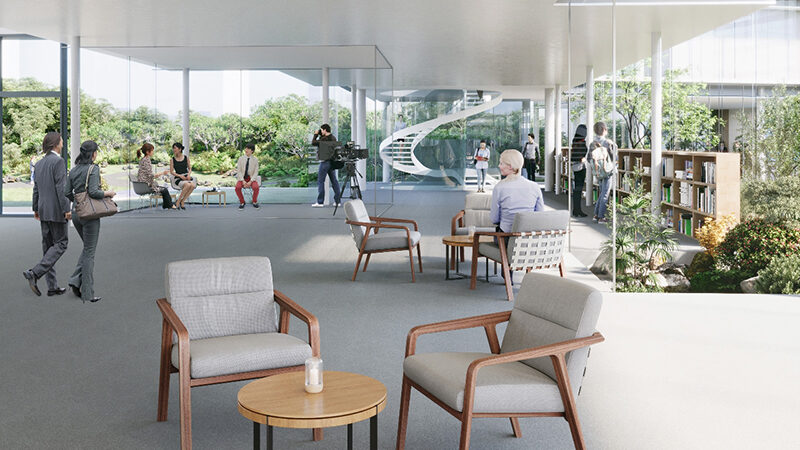
I-House will be reborn as a space where people gather from all over the world, finding comfort in connecting with nature, fostering understanding and respect for one another, and advancing intellectual dialogue.
To emerge as a knowledge hub for the Asia-Pacific, we have formulated three concepts to turn I-House into a “symbol of the future.”
Architectural Design
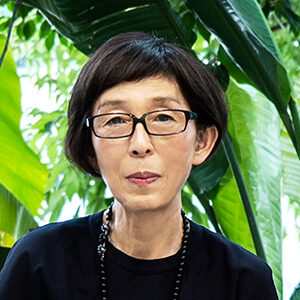
Kazuyo Sejima was born in 1956 in Ibaraki and studied architecture at Japan Women’s University. In 1987, she opened her own studio, Kazuyo Sejima & Associates, and in 1995, together with Ryue Nishizawa, founded SANAA. She is currently a professor at the Polytechnic University of Milan, a visiting professor at Japan Women’s University and the Osaka University of Arts, an emeritus professor at Yokohama National University, and director of the Tokyo Metropolitan Teien Art Museum. Major works include Saishunkan Seiyaku Women’s Dormitory, House in a Plum Grove, the Inujima Art House Project, the Sumida Hokusai Museum, and Japan Women’s University Mejiro Campus.
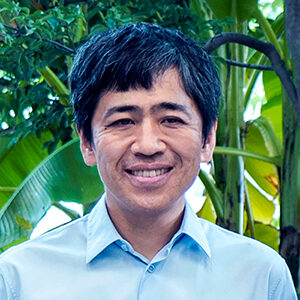
Ryue Nishizawa was born in 1966 in Tokyo and studied architecture at Yokohama National University. In 1995, he opened SANAA with Kazuyo Sejima, and in 1997 he founded the Office of Ryue Nishizawa. He is currently a professor at the Yokohama Graduate School of Architecture (Y-GSA). Major works include Moriyama House, House A, the Towada Art Center, the Teshima Art Museum, and Hiroshi Senju Museum Karuizawa.
SANAA
Sejima and Nishizawa were jointly awarded the Golden Lion at the ninth Venice Architecture Biennale in 2004, the Pritzker Prize in 2010, and the Praemium Imperiale award in honor of Prince Takamatsu in 2022.
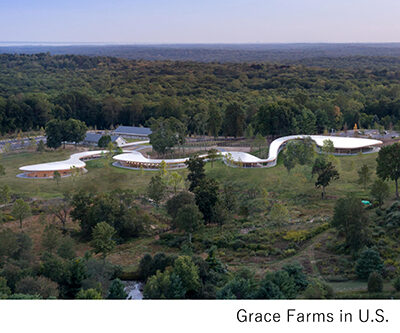
SANAA’s major works include the 21st Century Museum of Contemporary Art Kanazawa (Japan), the New Museum of Contemporary Art (USA), the Rolex Learning Center EPFL (Switzerland), Louvre-Lens (France), Grace Farms (USA), Shogin TACT Tsuruoka (Japan), the Hitachi City Hall (Japan), Bocconi University’s New Urban Campus (Italy), La Samaritaine (France), and the Sydney Modern Project (Australia).

Donation Office
International House of Japan
Tel: 03-3470-9806(weekday 9 am-5 pm)
E-mail: okimochi@i-house.or.jp
